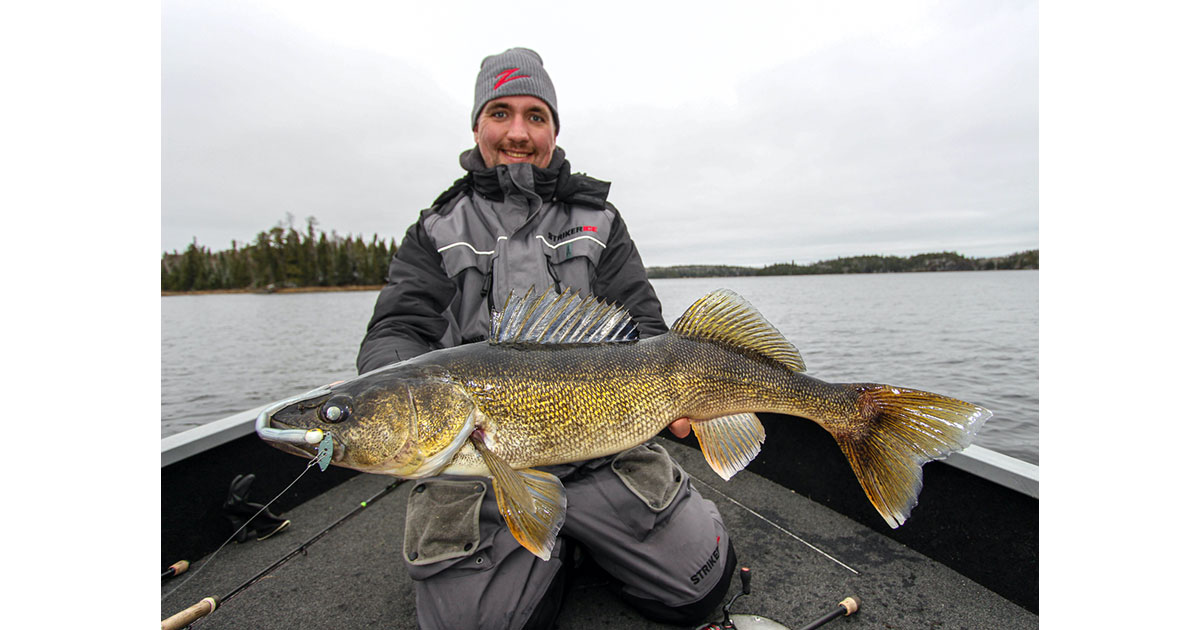- Details
IDNR Report
Indiana anglers are invited to participate in the 2024 Midwest Walleye Challenge, a virtual fishing tournament that offers the opportunity to win prizes and contribute to fisheries management while providing Indiana Department of Natural Resources (DNR) fisheries biologists with valuable data on the state’s walleye, sauger, and saugeye populations.
The tournament begins March 30 and ends June 30. Only catches of walleye, sauger, and saugeye will count in the tournament.
The Midwest Walleye Challenge was piloted in Iowa during the past two years. This year it will be offered across the Midwest as part of a larger fisheries research project funded by the Association of Fish and Wildlife Agencies.
- Details
By Louie Stout
Fall walleye stockings in Pine and Stone lakes the past three years appear to be delivering positive results.
Indiana has stocked the two lakes “off and on” since 1990. However, the DNR and private groups have been consistently stocking larger fall fish in the connected lakes since 2021 with improved results.
Stocking numbers have been 4,926 in 2021, 6,172 in 2022 and 3,610 in 2023. While those numbers seem low, studies have shown that you get better results with low numbers of larger fish than you do with high numbers of tiny fish.
The fall fish sizes range from 4.8 to 6.2 inches when they go into the lake.
District fisheries biologist Tom Bacula conducted a survey there last fall and was pleased with the preliminary results.
“We found several year-one (2022) walleyes last fall and they looked good,” he said. “There’s a good chance anglers will begin seeing legal-size fish from the 2021 stocking this season.”
- Details
Mercury Report
 Prosciutto-Wrapped Walleye
Prosciutto-Wrapped Walleye
People love their walleye and for good reason. This freshwater fish, found in the northern United States and Canada, is easy to eat. Known for its mild and sweet flavor, the walleye is a favorite at countless fish fries as well as any number of festivals. You’ll find walleye on a stick at the Minnesota State Fair, and, of course, there’s the Mercury Marine National Walleye Tournament, which is part of the Walleye Weekend, an annual festival held in Fond du Lac, Wis.
For this recipe, Pat Kehoe, Director of International Partnerships at Ducks Unlimited Canada, a non-profit organization committed to the conservation of Canada’s wetlands and associated waterfowl habitats, shares his recipe for a simple, yet delicious, prosciutto-wrapped walleye.
- Details
Z-Man Report
 Large Walleye
Large Walleye
A walleye’s compulsion to attack ChatterBait® bladed jigs has become undeniable.
Paradoxically, bladed jig patterns also remain off-the-radar for most walleye anglers. You’ve either tried it, succeeded and quickly gone radio silent.
Recently, to discover the realities of walleyes and ChatterBaits, we probed the minds of several elite anglers, guides and tournament aces who’ve previously dropped hints about the lures everyone is wondering about, but few have discussed in the open. Their answers are nothing short of eye-opening.
“If you think about it, a ChatterBait bladed jig makes total sense for walleyes,” says Dylan Nussbaum, a tournament pro from Saint Marys, Pa. “Walleyes love vibration, they’re drawn to it and especially those lower frequency thumps and pulses. They almost always respond positively to flash—those reflective, scale-like visuals like the continuous on-off flicker of a lightbulb.”
Bladed Jig Breakdown
Beyond the flash and vibration and the silhouette of a trailing softbait, Nussbaum calls out one other key enticement, exclusive to a ChatterBait. “Some of the best walleye baits all share in common a rare ability to move erratically, randomly,” notes Nussbaum. “Look at the movements of a suspending jerkbait, for example. Or a heavy, jigging style glidebait. Both lures dart and slash in unpredictable directions—just as a live perch or minnow kicks and jukes unpredictably as they’re being hunted."
Even though anglers have been catching big walleyes on ChatterBaits for years, often by accident, walleye specialists continue underrating bladed jigs because they’ve been programmed to think of them in terms of bass only. But put the blade in the water and there’s no doubt walleyes sense it via lateral line—a ChatterBait likely emits the most powerful low frequency vibrations of any artificial lure.





